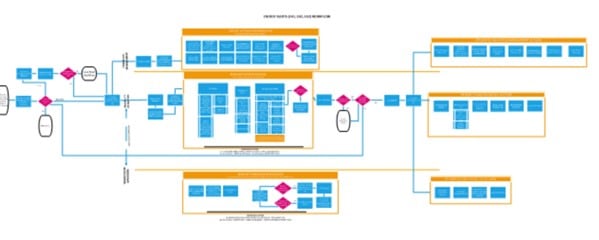Sustainability in the business world is more important than ever. Increasing social demands across multiple sectors have spurred companies to focus on transparency in their operations. With transparency comes the need for efficient communication.
But how can companies effectively communicate their sustainability efforts to the public?
This article will discuss the importance and relevance of ESG reports. Moreover, this discussion will focus on five specific reasons why companies must consider producing ESG reports.
What is an ESG report?
An environmental, social, and governance (ESG) report provides information about a company’s efforts regarding the impact its operations have on the environment, the local community, and its own internal governance.

ESG reports, also known as sustainability reports, allow the public to get in-depth information regarding the risks and opportunities companies face within their respective industries and the broader world around them.
This information aims to clarify questions surrounding companies’ steps to ensure their sustainability.
However, sustainability does not refer to a company’s own sustainability only. Sustainability also refers to the contributions companies make to ensure the environment around them remains sustainable.
For instance, manufacturers impact natural resource consumption and environmental conditions.
Consequently, an ESG report must detail how a manufacturer’s operations impact the environment and what actions it has taken to minimize detrimental effects.
Similarly, companies have a significant social impact on their local communities. For example, disclosing data about initiatives aimed at supporting local causes is an essential part of any corporation’s contribution to society.
Please note that these efforts are not about plugging the company’s endeavors. It is about communicating to local communities that corporations play a key role in having a positive impact on the community.
Additionally, ESG reports provide insight into a company’s governance. This business aspect is essential for investors, stakeholders, and the public at large. For instance, a public utilities company’s governance is essential in determining a community’s well-being. After all, when a gas company is unable to function properly, the local community’s well-being may be at risk.
As Michael Wilkins, Managing Director of Sustainable Finance, pointed out, “We know markets can have a transformative effect on society and can build a better world, and investor focus on sustainability issues has never been greater.”
These insights underscore two major issues. First, corporations exert tremendous influence over their local communities. Depending on the size and breadth of a corporation, its impact can be widespread throughout a country or region. Consequently, companies’ actions can have a transformative effect on local communities. For instance, job creation can help kickstart local economies, improving the overall quality of life.
Second, investors are gradually moving away from a profit-driven mindset to a sustainable one. This shift is due largely to the understanding that sustainability, transparency, and proper governance are crucial factors in ensuring long-term profitability.
When put together, these elements propel companies onto a path focused on delivering on customer and investor expectations. ESG reports are the means by which corporations can engage stakeholders as they endeavor to build a brand consistent with the current world’s demands.
Why should companies produce ESG reports?
There are five key reasons why companies should produce ESG reports.
1. ESG reports are valuable communication tools.
Now, more than ever, customers, investors, and policymakers want to get detailed information about companies’ operations. Thus, companies can use ESG reports to maintain an ongoing dialog regarding their initiatives and best practices. However, there is a caveat.
Corporations seeking to use ESG reports as promotional tools risk failing to achieve their objective. First, ESG reports intend to set the tone for a positive two-way relationship between corporations and stakeholders. Melissa Hammerle, President at Intelex, offered this insight: “ESG is creating a once-in-a-lifetime opportunity to maximize the positive impact we have on our employees and our businesses.” Indeed, creating a positive impact highlights the core of best business practices. Companies that fail to live up to standards may soon go the way of the dinosaurs.
Second, ESG reports shed light on how companies strive to build positive relationships. While a corporation’s efforts may be evident, offering quantifiable data helps establish the degree to which efforts are truly effective. Please remember that relationship-building is at the core of effective communication.
2. ESG reports are becoming an increasingly significant part of non-financial disclosure.
Legislation is currently in place, or soon to be, requiring companies to disclose non-financial information. It is worth noting that virtually all countries legally require companies to disclose financial information, generally for taxation purposes.
However, not all countries have enacted legislation demanding the disclosure of non-financial information. But that is changing quickly.
Here are examples of legislation requiring disclosure of non-financial information:
- European Union regulation 2020/852 establishes a framework to facilitate sustainable investment. As a result, corporations must disclose non-financial information as it pertains to sustainability practices, focusing on strong local governance wherever they do business.
- The Generally Accepted Accounting Principles (US GAAP) or International Financial Reporting Standards (IFRS) have increasingly included non-financial disclosure in the United States. These frameworks help corporations present useful information to investors and stakeholders.
- The Global Reporting Initiative is a multi-lateral framework standardizing non-financial reporting across various industries. This framework has gained popularity among governments and multinational organizations, particularly when analyzing sustainable investment opportunities.
Indeed, non-financial disclosure is here to stay. The companies that invest in developing robust ESG reporting capabilities will be better equipped to handle increasing non-financial reporting demands.
3. ESG reporting fosters brand identity.
ESG reporting is all about communicating a company’s core values to its customers. This communication enables corporations to convey their intentions insofar as creating a sustainable environment. This approach interacts well with increasing demands from consumers regarding socially responsible corporations.
Consumer demands go beyond good-quality products at affordable prices. These demands focus on the ethical treatment of workers, environmentally friendly manufacturing practices, and initiatives focused on equality. As a result, companies dedicated to using ESG reporting as a communication tool can find a great way to foster their brand identity. ESG reporting resonates with consumers, allowing brands to respond to consumer demands effectively.
In contrast, failing to use ESG reporting as a communication tool may lead consumers to walk away. Even if corporations actively engage in ESG tasks, failing to communicate initiatives can cause consumers to focus on brands that strive to engage their core consumers consistently.
4. ESG reporting is a crucial step in building a sustainable world.
People around the world have become increasingly aware of sustainability. As a result, building a sustainable world focuses on using a proactive approach to implement plans that address short-term and long-term needs.
So, how does ESG reporting help build a sustainable world?
ESG reporting places the spotlight on how corporations contribute to building a sustainable world. As a result, ESG reporting encourages companies to take on causes they truly believe in.
Ultimately, the nature of the causes themselves is not as relevant as contributing to building a sustainable world.

Please remember that consumers, investors, government authorities, and stakeholders want to know how companies contribute to a sustainable, inclusive, and fair world. Consequently, ESG reporting spurs companies to contribute meaningfully.
5. ESG reporting allows all stakeholders to address risks proactively.
An often-overlooked benefit of ESG reporting is assessing risk. ESG reports enable corporations to discuss risks and their potential impacts. As a result, all stakeholders can proactively address risks in order to minimize or eliminate their influence on sustainability.
It is worth noting that the core of ESG reporting is transparency. As such, transparency calls for companies to be honest about their strengths and weaknesses. In doing so, corporations can pave the way for clear actions.
For instance, ESG reporting can highlight significant environmental risks in current manufacturing processes, such as overreliance on fossil fuels. Raising this issue can lead to initiatives across society, leading to the implementation of alternative, renewable energy sources. Thus, addressing issues sooner rather than later allows society to find solutions collectively before it is too late.
How does ESG reporting work?
ESG reporting aims to communicate with a corporation’s core audience. Therefore, determining the core audience is the first step in producing effective ESG reporting documentation. It is worth mentioning that ESG reports are not blanket documents. This situation means that individualized reports may be necessary to address specific audiences. For example, a comprehensive ESG report can break down into separate sections addressed to government authorities, another for investors, and others for the general public.
Next, choosing an appropriate framework is key. Frameworks such as the Global Reporting Initiative highlight what information should be disclosed. Nevertheless, corporations are free to include as much information as they see fit. A good rule of thumb is to include as much information as possible. The best ESG reports shed as much information as possible on burning questions. All corporations need to do is ask stakeholders what they want to know and strive to answer those questions.
Lastly, maintaining focus is critical. Effective ESG reporting answers key questions without going off on a tangent. While stakeholders want as much information as possible, they also want reports to stay on target.
Consider this situation:
Reducing carbon emissions has been a hotly contested topic. This topic was at the forefront of a recent local election. Consequently, the public wants to know what local companies are doing to reduce their carbon emissions. A local manufacturer has decided to include an ESG report in addition to its quarterly financial report. In the ESG document, the company has made its carbon reduction initiatives the main focus. The report outlines how the company sees carbon emissions, the current steps to reduce them, and future initiatives to reach a net zero policy.
In this example, the company aims to act responsibly while being transparent with the local community. This approach builds trust and bridges the communication gap between the company and its stakeholders.
How can a writing agency help produce effective ESG reports?
ESG reporting’s benefits are clear. However, companies may need a helping hand in producing them. After all, not all corporations have expert in-house writing teams.
That is where a writing agency can step in to provide a helpful boost.
A professional writing agency can tackle the heavy lifting regarding producing high-quality ESG reports. In particular, writing agencies can transform corporate information into an articulate document. Moreover, professional writers can tailor language to communicate with relevant stakeholders. This skill comes in quite handy when various ESG reports are necessary.
The biggest advantage of hiring a writing agency to produce ESG documents lies in saving time and effort. Corporations can delegate time-consuming writing and editing tasks to a trusted writing agency. As a result, staff members can focus on their core functions. This approach enables companies to continue focusing their initiatives on relevant, sustainable practices.
Please bear in mind that a writing agency is a collection of skilled scribes with diverse backgrounds. As such, professional writers are not only talented in producing prose. They are also adept at translating technical information into a digestible format.
Ultimately, corporations stand to benefit greatly from employing a writing agency’s services. The savings in time and effort are worth investing in hiring a writing agency.
One Final Thought
The modern business landscape demands that brands and corporations maintain consistent communication with consumers and the general public. Companies that fail to communicate may be seen as uncaring or even suspicious. Therefore, using ESG reporting as a communication tool is a must.
Hiring a writing agency can become a company’s best decision to foster effective communication. A professional writing agency ensures that a company’s core message gets out to the right audience. Experienced writers know what it takes to strike a chord with core audiences.
So, why take any chances?
Employing a professional writing agency takes the guesswork out of producing high-quality, relevant communication. Consumers demand it. The future deserves every effort to build a sustainable world based on equality and trust.

































